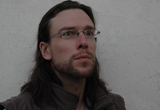 Dust has blown up around the Kuchlak health centre near Quetta. A gritty wind that hurts the eyes, matts the hair, and coarsens the teeth. Dust clouds have utterly concealed the nearby mountains and obscured even the sun. This is an unfamiliar meteorological phenomenon for me: “a rain of mud” one of the health workers suggests. And indeed a fine layer of dirt quickly settles everywhere: on the windshield of the MSF people-carrier that brings city staff to this semi-rural location, on the scattered huts and ramshackle dwellings that line the roadside near the health centre, and on the clothing of Shafiq so that he creates a miniature dust storm as he pulls the shirt of his shalwar kameez over his head. Nine year old Shafiq shows me an ulcerating lesion the size of a postage stamp on his shoulder, another on his arm, and the one on his cheek is unmissable. This is an unfamiliar dermatological pathology for me: “the year-long sore” is the local name I am told; a reference to the duration of the lesions.
Dust has blown up around the Kuchlak health centre near Quetta. A gritty wind that hurts the eyes, matts the hair, and coarsens the teeth. Dust clouds have utterly concealed the nearby mountains and obscured even the sun. This is an unfamiliar meteorological phenomenon for me: “a rain of mud” one of the health workers suggests. And indeed a fine layer of dirt quickly settles everywhere: on the windshield of the MSF people-carrier that brings city staff to this semi-rural location, on the scattered huts and ramshackle dwellings that line the roadside near the health centre, and on the clothing of Shafiq so that he creates a miniature dust storm as he pulls the shirt of his shalwar kameez over his head. Nine year old Shafiq shows me an ulcerating lesion the size of a postage stamp on his shoulder, another on his arm, and the one on his cheek is unmissable. This is an unfamiliar dermatological pathology for me: “the year-long sore” is the local name I am told; a reference to the duration of the lesions.
Cutaneous Leishmaniasis, the western medical term for the condition, is noticeably less evocative of the lesions and their sufferers. Rather, it recalls the Raj and the British Army medical officer William Leishman who served during the reign of Victoria, Empress of India, and is credited with identifying the disease’s causative agent (a protozoan parasite, transmitted by sandfly bites, which infects the individual and eventually becomes manifest in the ugly skin lesions). Military interest in the condition was fleetingly rekindled recently by the wars in the Gulf and Afghanistan and the sores on returning service personnel.
Though not fatal, the skin sores of cutaneous leshmaniasis are hugely disfiguring and highly stigmatising here in Pakistan because they are often falsely assumed to be transmissible by contact. Consequently, the disease often brings social exclusion and significant psychological morbidity. Women are said to be most affected: they may be prevented from getting married, or even from touching their children and are less likely to access treatments.
A recent review article from the WHO’s Leishmaniasis Control Programme drew particular attention to the issue of inadequate access to drug treatments for leishmaniasis:
“Despite considerable investments in time and energy of both WHO and NGOs, namely Médecins Sans Frontières, to reduce prices and increase availability of drugs, a number of easily resolved factors impeding drug access, caused by a lack of coordination, willingness, and interest of pharmaceutical manufacturers and the international community remain to be resolved.”
Today, Shafiq is receiving the last of his treatments: a dose of antimonial drug injected into each of his three lesions, every three days, for two months. Remarkably, he undergoes the intra-lesional injections without so much as wincing.
Ultimately, however, access to treatments is only part of the story. Like other neglected tropical diseases (such as amoebiasis, schistosomiasis, dengue and yellow fevers, cholera and leprosy) that remain of only marginal policy and research interest despite their relatively high incidence and morbidity in areas where they are endemic, leishmaniasis is a disease of the poor and the politically ignored. Their lack of adequate housing and clothing, their potential proximity to untreated animal and human cases that can act as disease reservoirs, and their possible forced migration to endemic regions mean that poor people are more likely to encounter leishmaniasis parasites. Their compromised nutritional status and immune function, their lack of education and knowledge of disease and treatment options, as well as their probable lack of access to health services means that they are more susceptible following infection. And the disease stigma and high treatment costs are liable to maintain the disenfranchised in a cycle of exclusion and poverty.
The treatments for leishmaniasis provided free by MSF at sites like Kuchlak are a vital stop-gap, but the real solution lies in an end to poverty.
Patient consent obtained.
Andrew Moscrop qualified as a GP last year and will be working with MSF in Pakistan for six months.